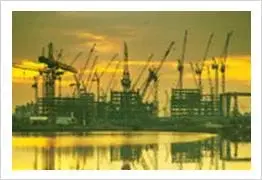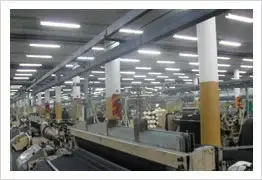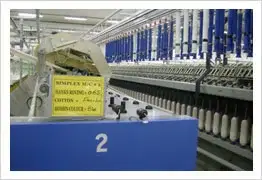
Compressed air for construction is an essential resource in today’s construction industry. It supports a wide range of applications that improve efficiency, enhance safety, and boost overall productivity. From material handling to powering site operations, compressed air technology plays a crucial role in modern construction practices.
compressed air for construction is mixed with products such as coal dust to create fluidization, making these materials easier to handle and convey. This process enhances the efficiency of material transport, particularly in challenging environments.
In construction, maintaining equipment is vital for smooth operations. Compressed air for construction is commonly used in reverse air jet purging to keep filters clean and extend their lifespan. This reliable method reduces downtime and ensures optimal performance of machinery on construction sites.
Compressed air serves as a safe medium for heavy-duty sandblasting, effectively cleaning surfaces such as ship hulls, oil tanks, bridges, and steel structures. For smaller or more delicate surfaces, it can be used in conjunction with dry ice or soda blasting techniques.
Compressed air for construction powers drill rigs used in stone and mineral quarries, mines, and water wells. It is also utilized for ramming steel structures and piling road barriers, delivering reliable performance even in the most demanding construction environments.
In hard-to-reach areas, compressed air enables the conveying and spraying of concrete. This method is ideal for remote or elevated sites, allowing for efficient placement. Additionally, air is used to clean delivery tubes, minimizing waste and ensuring smooth operation. Concrete spraying is also effective for stabilizing rocky hillsides and in tunnel construction.
Compressed air is essential for operating control systems, such as opening and closing control valves, ensuring effective air conditioning in construction environments.
In the construction sector, compressed air provides a non-flammable medium to power tools, enhancing safety, especially in mines and other hazardous environments.
Compressed air is integral to the operation of ventilation systems, ensuring safe air circulation in hazardous mine environments and construction sites.
Compressed air is also employed as a safe medium for heavy-duty blasting in construction, providing controlled and effective operations.
By leveraging the power of compressed air for construction, the industry can significantly boost efficiency, improve safety standards, and streamline operations across all types of projects. CoolAir Compressors is committed to supporting your construction needs with advanced and reliable air compression technologies. Contact us today to discover how we can help optimize your construction processes with smart air solutions.



Piping Material Features Comparison |
|||
| Piping Features | Stainless Steel(Type 304L) | Mild Steel | Blue anodized Aluminum Alloy |
| Weight (Dia 6inch, Length 6m) | 127.2 | 169.6 | 29.142 |
| Anti-Corrosive | Yes | No | Yes(100%) |
| Pressure drop (Dia 2 inch Length= 20m, Airflow=3 cubic metres/Minute, Pressure=10 bar) | 0.25 | 0.4 Bar | 0.1 |
| Efficient Energy Use | High | Low-moderate | High( Potential Cost savings of 34%) |
| Structural Durability | Very Strong | Very Strong | Strong |
| High Thermal Endurance | Yes | Yes | Yes |
| Installation Ease | Less Difficult | Difficult | Easy(High Flexibility and Modularity) |
| Simple Installation | Approx 6 feet length per hour | Approx 6 feet length per hour | Approx 45 feet Length per hour |
| Manpower and Work Hours Needed for 2″ Pipe Over 3000 Feet | Approx 600 man-hours/8 men for 2 weeks | Approx 600 man-hours/8 men for 2 weeks | About 100 man-hours with 8 workers, completed in under 2 days |
| Annual Charges for Installation, Commissioning & Operation | Approx 3000 dollars | Approx 7820 dollars | Approx 1300 dollars |
| Installation Cost Breakdown: Material % / Labor % | 30% / 70% | 25% / 75% | 80% / 20% |
| Texture of Surface | 0.03 | 0.05 | 0.001 |
| Required Specialized Tools: Welder, Threader, Groove Cutter | Yes | Yes | No |
| Quality of Air | High — When needed, these pipe systems comply with ISO 8573-1:2010 air quality standards | Low( Not according to !SO 8573-2010 air quality standards) | High — These pipe systems support compliance with ISO 8573-1:2010 air quality standards when required. |
| Cost Rate per Meter | Almost 2 less than Aluminum | 3 Times less than Aluminum | 163.64 Dollars |
| Service Life Depends on Environment, Pipe Design, and Grade | 30 years | 40 years | 20 years |
| Upfront Installation Cost | Material : 30% Labor:70% | Material : 25% Labor:75% | Material : 80% Labor:20% |
| Care and Maintenance | Difficult — Rust buildup under pipes and fittings can reach machinery, requiring weekly preventive maintenance. | Difficult (Accumulation of rust under pipes and fittings which travels to machinery may require preventive maintenance every 3-4 days) | Easy — No rust buildup, with preventive maintenance needed every 4 weeks. |